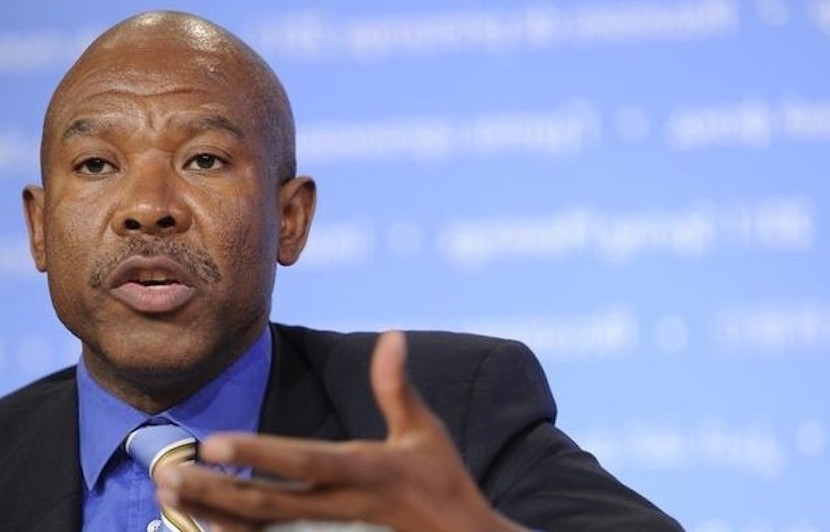To borrow from Hunter S Thompson, many South Africans are watching yet another plunge in the Rand with a mixture of fear and loathing. Fear because their wealth, in global terms, is falling fast. And loathing because of the impact they believe it will have on imports and hence inflation. On the upside, there’s a sense of calm at the SA Reserve Bank. Unlike during previous currency crises, specifically 1998, the SARB’s reaction has been mature, almost sanguine. SARB Governor Lesetja Kganyago is proving to possess a very safe pair of hands. He knows there is little purchase in trying to defend the currency during this particular Chinese-initiated storm so is not wasting the country’s precious reserves. And with oil on the slide, the teeth have been drawn from greatest inflationary driver of Rand weakness – the petrol price. That’s cold comfort for importers or those intending to travel abroad. But it does aid the cause of SA’s embattled export sector – and once the Visa regulations are sorted out, will make the country even more attractive for tourists. – Alec Hogg

By Rene Vollgraaff
(Bloomberg) — The rand’s slide to the lowest since 2001 isn’t proving to be as big a headache for South African policy makers as it was the last time the currency was in free-fall.
Two years ago, the South African Reserve Bank estimated that every 10 percent decline in the rand boosts the inflation rate by 2 percentage points. While the bank still cites the rand as the main risk to inflation, it now estimates the pass-through effect of a weakening currency to consumer prices may be about half of what it initially assumed. Inflation-linked bonds suggest investors aren’t worried as the rand heads toward 13 to the dollar.
The rand’s more muted effect on prices, mainly due to weak demand in the economy and increased competition among retailers, is benefiting the inflation outlook at the same time that oil prices trade near a six-year low of $50 a barrel. That gives Reserve Bank Governor Lesetja Kganyago scope to limit rate increases in an effort to support an economy hit by power shortages, falling commodity prices and strikes.
“We’ve had petrol-price shocks and food-price shocks and a huge exchange-rate shock, but core inflation actually behaved itself quite well,” Dave Mohr, chief investment strategist at Cape Town-based Old Mutual Wealth, said by phone on Aug. 14. “That shows that the economy is less inflationary than what traditional models show.”
Breakeven Rate
Core inflation, which excludes a broad group of food and energy costs, eased to 5.5 percent in June and was probably unchanged in July, according to the median estimate of 14 economists surveyed by Bloomberg. Data from the statistics office, which is due to be published on Wednesday, will probably show headline inflation accelerated to 5 percent from 4.7 percent.
The five-year breakeven rate, a measure of investors’ inflation expectations in the period, fell five basis points this month to 6.53 percent even as the rand slid 2 percent against the dollar. That compares with a 20 basis-point increase in the same period in Turkey, one of South Africa’s emerging market peers.
Investor expectations of another interest-rate increase have barely budged this year despite the currency’s weakness. Forward-rate agreements starting in five months, used to speculate on borrowing costs, show traders are pricing in 34 basis points of interest-rate increases by the end of the year, compared with 38 basis points at the beginning of the month.
Lower Risk
The central bank raised its benchmark repurchase rate on July 23 for the first time in a year to 6 percent as it forecast inflation will exceed the 3 percent to 6 percent target band for the first half of next year. The bank’s current interest-rate tightening cycle will be “moderate,” Kganyago said on Aug. 11.
“Oil is coming down and inflation forecasts will probably be revised downwards a bit on the basis of that,” Jonathan Myerson, head of fixed-income investments at Cadiz Asset Management Ltd. in Cape Town, said by phone on Aug. 14. There’s a chance of another interest rate increase this year as the U.S. Federal Reserve moves closer to tightening monetary policy, he said.
The rand weakened 0.3 percent to trade at 12.9461 per dollar as of 4:20 p.m. in Johannesburg on Tuesday, taking its decline since the start of the year to 11 percent. Yields on rand-denominated government bonds due December 2026 rose 6 basis points to 8.27 percent.
“The rand’s weakness will not necessarily lead to an inflation problem,” Elize Kruger, an economist at KADD Capital, said by phone from Johannesburg on Aug. 17. “It is a risk, but it’s not a risk that has played out to the same extent as it did in the past after rand weakness.”


